PINDONE
Synonym(s):1,3-Dioxo-2-pivaloylindan;2-Pivaloyl-1,3-indandione;2-Trimethylacetyl-1,3-indandione;Pindone
- CAS NO.:83-26-1
- Empirical Formula: C14H14O3
- Molecular Weight: 230.26
- MDL number: MFCD00021230
- EINECS: 201-462-8
- SAFETY DATA SHEET (SDS)
- Update Date: 2025-01-27 09:38:02
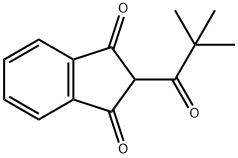
What is PINDONE?
Chemical properties
Pindone is a bright yellow crystalline solid or powder. May turn yellow-brown on contact with air. Nearly odorless.
The Uses of PINDONE
Pindone may be used as an analytical reference standard for the quantification of the analyte in biological samples using different chromatography techniques.
The Uses of PINDONE
Insecticide; rodenticide
Definition
ChEBI: Pindone is a member of indanones and a beta-triketone.
General Description
Yellow solid or powder.
Air & Water Reactions
Insoluble in water.
Reactivity Profile
Ketones, such as PINDONE, are reactive with many acids and bases liberating heat and flammable gases (e.g., H2). The amount of heat may be sufficient to start a fire in the unreacted portion of the ketone. Ketones react with reducing agents such as hydrides, alkali metals, and nitrides to produce flammable gas (H2) and heat. Ketones are incompatible with isocyanates, aldehydes, cyanides, peroxides, and anhydrides. They react violently with aldehydes, HNO3, HNO3 + H2O2, and HClO4.
Health Hazard
Pindone is a vitamin K antagonist and causes inhibition of prothrombin formation, which results in hemorrhage. There are no reports of effects in humans.
Fire Hazard
Flash point data for PINDONE are not available, but PINDONE is probably combustible.
Safety Profile
Poison by ingestion, intravenous, and parenteral routes. Causes reduced blood clotting, which leads to hemorrhaging. Used as an anticoagulant and rodenticide. When heated to decomposition it emits acrid smoke and irritating fumes. See also WARFARIN.
Potential Exposure
Pindone is used as an anticoagulant and rodenticide. A potential danger to those involved in manufacture, formulation and application of this chemical
Shipping
UN2811 Toxic solids, organic, n.o.s., Hazard Class: 6.1; Labels: 6.1-Poisonous materials, Technical Name Required. UN2588 Pesticides, solid, toxic, Hazard Class: 6.1; Labels: 6.1-Poisonous materials, Technical Name Required.
Incompatibilities
Ketone substances are incompatible with oxidizers (chlorates, nitrates, peroxides, permanganates, perchlorates, chlorine, bromine, fluorine, etc.); contact may cause fires or explosions. Keep away from alkaline materials, strong bases, strong acids, oxoacids, epoxides, nitrated amines; azo, diazo, azido compounds, carbamates, organic cyanates.
Waste Disposal
Use a licensed professional waste disposal service to dispose of this material. Dissolve or mix the material with a combustible solvent and burn in a chemical incinerator equipped with an afterburner and scrubber. All federal, state, and local environmental regulations must be observed. In accordance with 40CFR165, follow recommendations for the disposal of pesticides and pesticide containers. Must be disposed properly by following package label directions or by contacting your local or federal environmental control agency, or by contacting your regional EPA office.
Properties of PINDONE
| Melting point: | 108-110° |
| Boiling point: | 312.25°C (rough estimate) |
| Density | 1.1914 (rough estimate) |
| refractive index | 1.5557 (estimate) |
| storage temp. | APPROX 20°C
|
| solubility | Soluble in most organic solvents (Worthing and Hance, 1991) |
| form | neat |
| pka | 3.47±0.10(Predicted) |
| color | Bright yellow crystals |
| Water Solubility | 18 ppm at 25 °C (Gunther et al., 1968) |
| Merck | 13,7526 |
| BRN | 2051258 |
| Exposure limits | NIOSH REL: TWA 0.1 mg/m3, IDLH 100 mg/m3; OSHA PEL: TWA
0.1 mg/m3; ACGIH TLV: TWA 0.1 mg/m3 |
| EPA Substance Registry System | Pindone (83-26-1) |
Safety information for PINDONE
| Signal word | Danger |
| Pictogram(s) |
 Skull and Crossbones Acute Toxicity GHS06  Health Hazard GHS08  Environment GHS09 |
| GHS Hazard Statements |
H301:Acute toxicity,oral H372:Specific target organ toxicity, repeated exposure H410:Hazardous to the aquatic environment, long-term hazard |
| Precautionary Statement Codes |
P260:Do not breathe dust/fume/gas/mist/vapours/spray. P264:Wash hands thoroughly after handling. P264:Wash skin thouroughly after handling. P270:Do not eat, drink or smoke when using this product. P273:Avoid release to the environment. P314:Get medical advice/attention if you feel unwell. P301+P310:IF SWALLOWED: Immediately call a POISON CENTER or doctor/physician. |
Computed Descriptors for PINDONE
New Products
4,4-Difluoropiperidine hydrochloride tert-butyl 9-methoxy-3-azaspiro[5.5]undecane-3-carboxylate Indole Methyl Resin N-Isopropylurea N,N-Dicyclohexylcarbodiimide(DCC) MELDRUMS ACID 5-METHYLISOXAZOLE-4-CARBOXYLIC ACID Magnessium Bis glycinate Zinc ascorbate 1-bromo-2-butyne 2-acetamidophenol 9(10H)-anthracenone Erythrosin B, 4-Piperidinopiperidine 2-((4-morpholinophenylamino) (methylthio) methylene) malononitrile 2,4-dihydroxybenzaldehyde 3-(4-morpholinophenylamino)-5-amino-1H-pyrazole-4-carbonitrile Methyl 2-methylquinoline-6-carboxylate 2,6-dichloro-4-nitropyridine 4-Bromo-2-chlorobenzonitrile 2-(benzylamino)acetic acid hydrochloride 4-(tert-Butoxycarbonylamino)but- 2-ynoic acid 3,4-dihydro-2H-benzo[b][1,4]dioxepine 1-Phenyl-1-cycloprppanecarboxylicacidRelated products of tetrahydrofuran

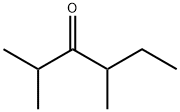
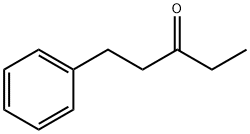
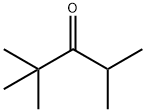
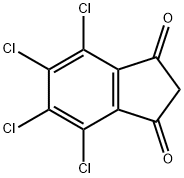


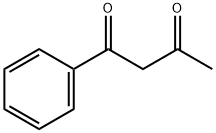
You may like
-
 Pindone CAS 83-26-1View Details
Pindone CAS 83-26-1View Details
83-26-1 -
 3-(4-amino-1-oxoisoindolin-2-yl)-1-methylpiperidine-2,6-dione 98%View Details
3-(4-amino-1-oxoisoindolin-2-yl)-1-methylpiperidine-2,6-dione 98%View Details -
 614-19-7 98%View Details
614-19-7 98%View Details
614-19-7 -
 3112-85-4 Methyl phenyl sulfone 98%View Details
3112-85-4 Methyl phenyl sulfone 98%View Details
3112-85-4 -
 20677-73-0 (2,2-diethoxyethyl)methylamine 98%View Details
20677-73-0 (2,2-diethoxyethyl)methylamine 98%View Details
20677-73-0 -
 3-(4-(hydroxyamino)-1-oxoisoindolin-2-yl)piperidine-2,6-dione 98%View Details
3-(4-(hydroxyamino)-1-oxoisoindolin-2-yl)piperidine-2,6-dione 98%View Details -
 57381-49-4 2-bromo-4-chlorobenzonitrile 98%View Details
57381-49-4 2-bromo-4-chlorobenzonitrile 98%View Details
57381-49-4 -
 4,6-dichloropyrimidine-5-carbaldehyde 98%View Details
4,6-dichloropyrimidine-5-carbaldehyde 98%View Details
5305-40-8
